Bitter Bolete
Can cause excitement when first found due to thinking you have found a Penny Bun and although this mushroom is technically edible if it is mistakenly added to a meal it will ruin it and render it too bitter for consumption.
| Mushroom Type | |
| Common Names | Bitter Bolete (EN), Cap Tyllog Chwerw (CY), Goryczak Żółciowy (PL), Epeízű Tinóru (HU) |
| Scientific Name | Boletus / Tylopilus felleus |
| Synonyms | Boletus felleus |
| Season Start | Jul |
| Season End | Oct |
| Average Mushroom height (CM) | 7-10 |
| Average Cap width (CM) | 7-10 |
Cap
7-10 cm. Pale to dark brown. Starting convex with a suede like covering but flattening out, losing any small hairs and sometimes splitting with age.
Pores
Starts with white, sponge like pores that develop a pink tinge around the pore openings and will bruise pink when damaged eventually turning brown.
Stem
7-10 cm long, 2-3 cm diameter. Off white to tan with a darker net like pattern or reticulation, particularly towards the top of the stem. The base is usually wider than the top.
Possible Confusion
Can look very like a Penny Bun (Boletus edulis), pictured, or Summer Bolete (Boletus reticulatus) but the reticulation on the stem is dark on a lighter background for the Bitter Bolete and light on a slightly darker background for the Penny Bun and Summer Bolete and the pores of the Penny Bun and Summer Bolete do not bruise to a pink colour like the Bitter Bolete.
Taste / Smell
Extremely bitter.
Spores
Clay-pink to wine coloured. Subfusiform.
Other Facts
Felleus roughly translates as bile which is a good description of this mushrooms bitterness.


 (24 votes, average: 4.00 out of 5)
(24 votes, average: 4.00 out of 5)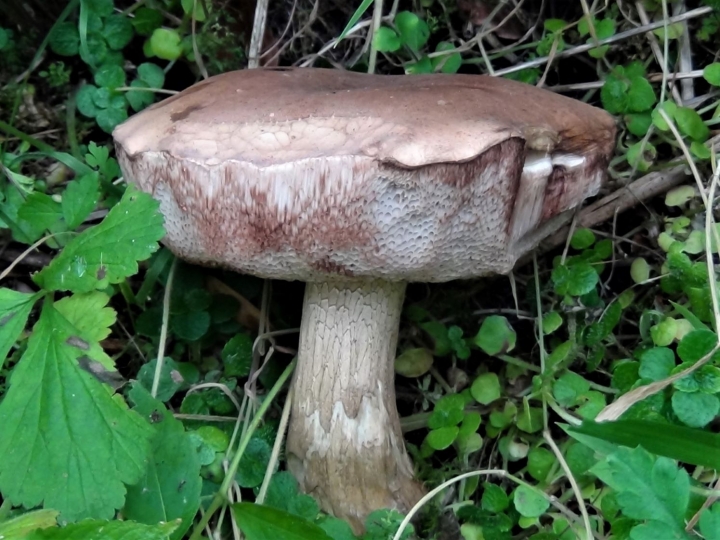















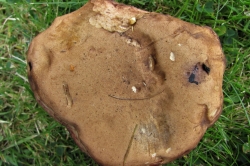
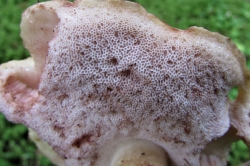
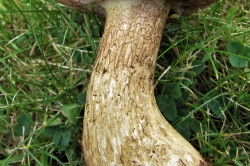
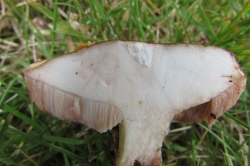
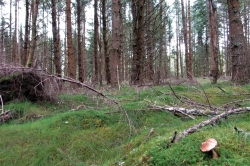
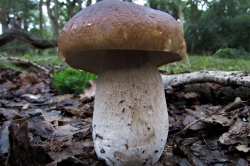




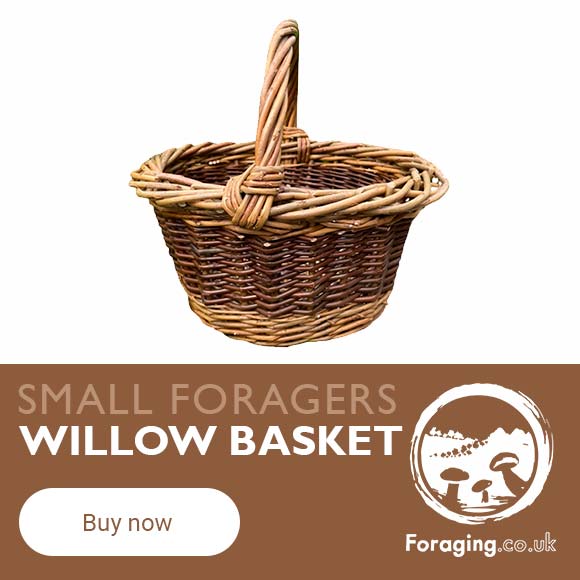

COMMENTS